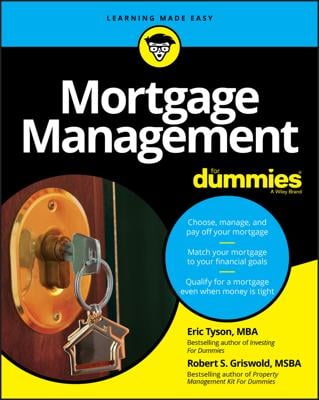A reverse mortgage can be a valuable retirement planning tool that can greatly increase retirees income streams by using their largest assets: their homes. A reverse mortgage allows homeowners to borrow against their home’s equity, while still maintaining ownership of the home.
![[Credit: ©iStockphoto.com/DebbiSmirnoff]](https://www.dummies.com/wp-content/uploads/475573.image0.jpg)
The best part about a reverse mortgage is that unlike conventional mortgages, there are no payments involved. Instead, the lender makes payments to the borrower either through a lump sum, monthly payments, or a line of credit.
The reverse mortgage is repaid when the borrower dies, permanently moves from the residence, or the property is sold. Instead of you paying the bank monthly and the equity in your home growing, the bank pays you monthly, and the equity may shrink. It is important to know that you must be 62 in order to qualify.
How can a reverse mortgage benefit me?
A reverse mortgage can be a powerful source of funding for individuals who need to increase their income to be comfortable in retirement. The largest personal asset most retirees possess is their home. In many cases, a retiree’s home is paid off. A reverse mortgage increases income without increasing monthly payments and allows a retiree to stay in his or her home.
If you are at least 62 and considering a reverse mortgage, the amount you will be eligible for is based on several things, most importantly, the value of your home, your age, and interest rates. You will be eligible for more money the older you are, the more your home is worth, and the lower current interest rates are.
Negative aspects of reverse mortgages
Among the negatives of a reverse mortgage are the costs involved. All mortgages have costs, but reverse mortgage fees, which can include the interest rate, loan origination fee, mortgage insurance fee, appraisal fee, title insurance fees, and various other closing costs, are extremely high when compared with a traditional mortgage. Costs vary but can be as high as $30,000 or $40,000. This cost is not paid out of pocket, but rolled into the loan.
Another potential issue to be aware of is the requirement to pay back the loan if you should permanently move out of the home. This may not sound like a problem now, but if you ever need to enter a full-time care facility, the loan would become due if you left your home for a year or more.
The final downside to the reverse mortgage affects your estate. The reverse mortgage will almost always decrease the equity in your home, which will leave less money to your heirs.
Reverse mortgage myths — and the truth
Misconceptions about reverse mortgages may cause homeowners to avoid consideration of these complex loans. Or, eligible seniors might proceed too hastily without realizing all the possible repercussions of their financial decisions. Here are a few wrong ideas and realities about this real estate option.
Myth: The lender takes title to the home.
Truth: You still retain ownership of your home. The reverse mortgage is only a lien against the property.
Myth: The loan can exceed the value of the property, sticking you or your heirs with a large bill when you eventually leave your home.
Truth: A reverse mortgage is a “non-recourse” loan, which means that you, your heirs, or your estate will never owe more than the appraised value of the home at loan maturity.
Myth: You can’t get a reverse mortgage if you currently have a conventional mortgage.
Truth: Although this is true, you can get a reverse if you use the proceeds to pay off your existing mortgage at close.
Myth: A reverse mortgage can cause you to be evicted from your home.
Truth: You leave your home when you choose. No one will force you from your home. The reverse mortgage is not due until your home is no longer your primary residence.

